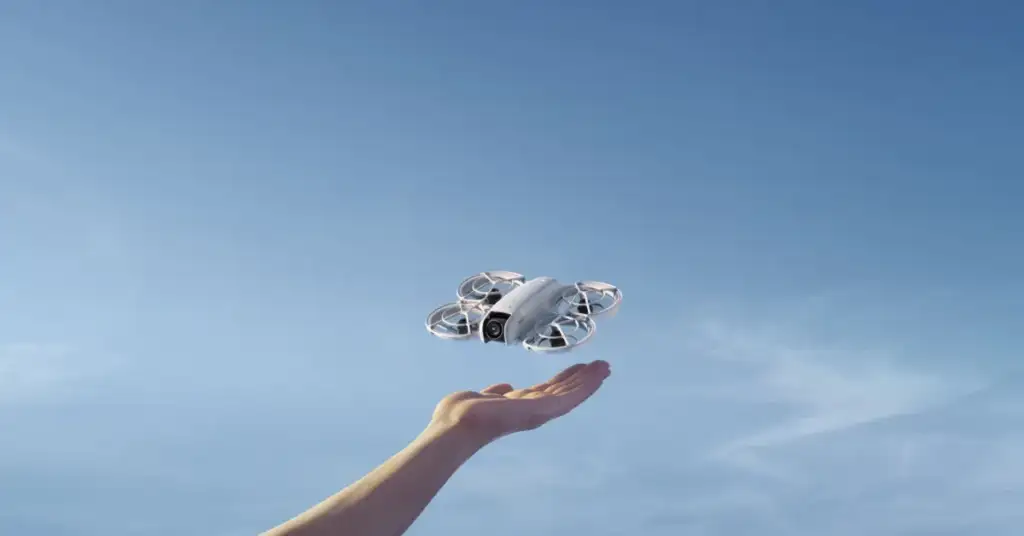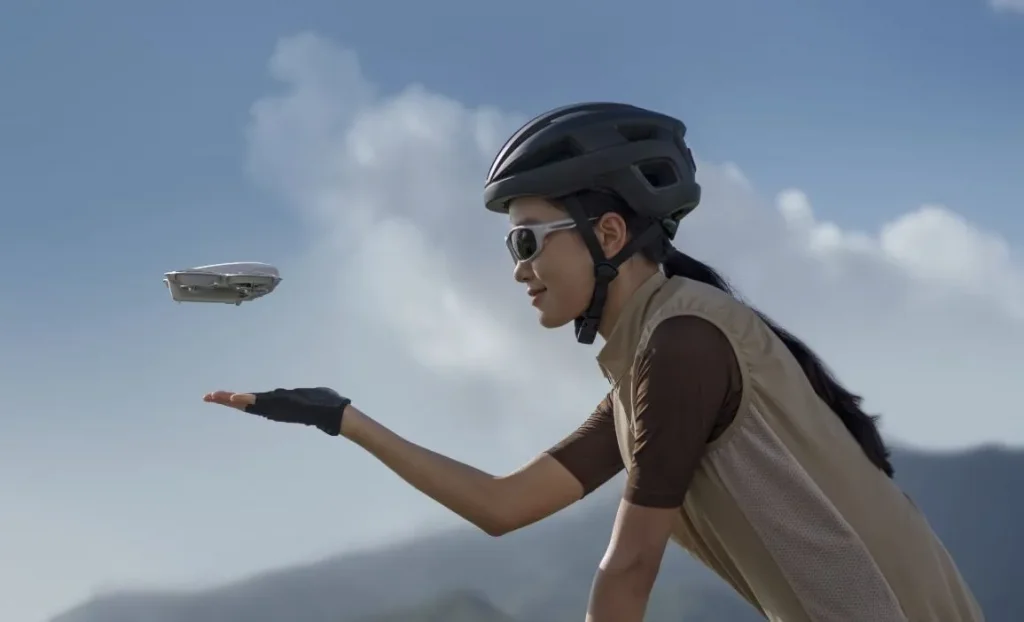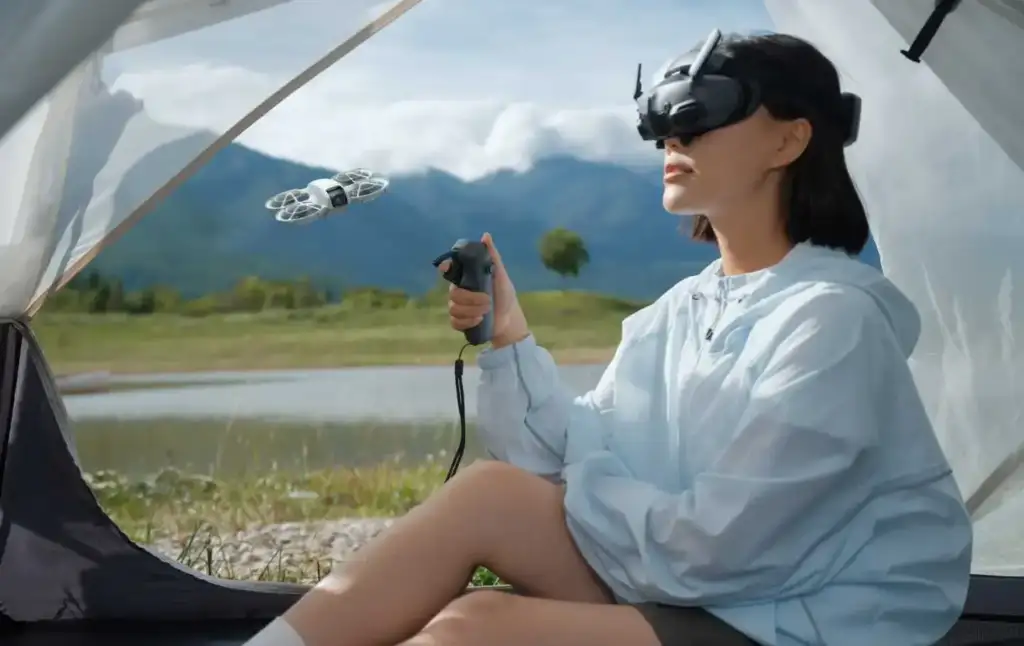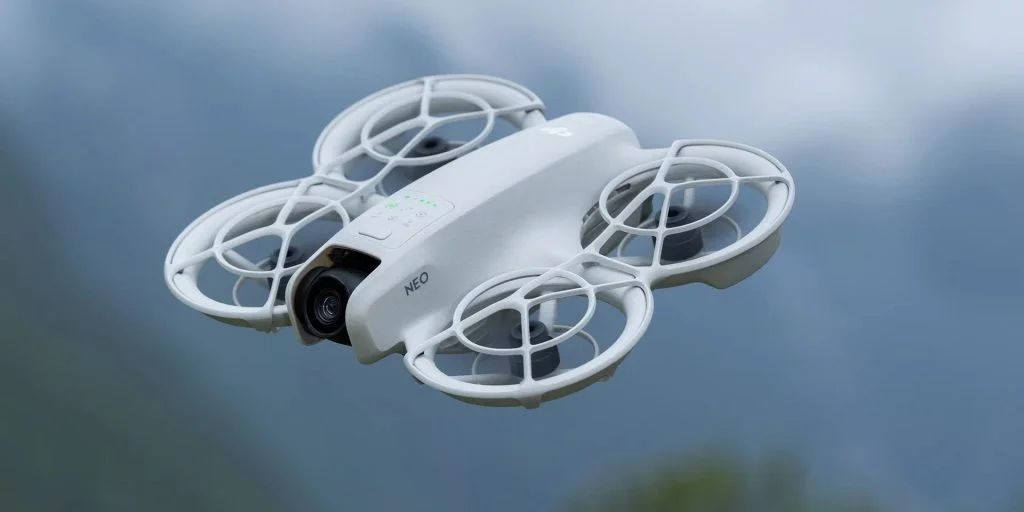Share This Article
Learn more
Given its position as the undisputed market leader, DJI offers a large selection of camera drones for sale. However, I had never seen a genuine entry-level model from the firm before the Neo showed up on my desk, the kind of thing you could theoretically pick up on a whim while browsing the high street.
DJI’s next-to-cheapest model, the DJI Mini 4K, is more expensive than the Neo. Additionally, it’s the lightest and most small drone that DJI has ever produced. In short, it belongs in the category of “toy drones.” But as I quickly discovered, compared to DJI’s more expensive models, it’s a fully functional drone for the cost of a toy drone, albeit one with a few rough edges.
Is the DJI Neo the ideal entry-level drone for novice operators hoping to gain experience? After a week of flying it about my area, I’m ready to tell you.
Key Takeaways
- Compact and lightweight design
- 4K video recording for high-quality footage
- Advanced stabilization for smooth shots
- Long battery life for extended use
- Easy-to-use controls with intuitive interface
DJI Neo: OVERVIEW
Both hobbyists and casual users will find the DJI Neo to be a lightweight and portable drone. It’s designed to produce excellent video with little effort, which makes it ideal for catching impromptu moments.

Description
The Neo is a "serious" drone that is comparable in size and cost to a toy drone. Despite its many drawbacks, it is the ideal drone for children and inexperienced users. But be warned once you get the drone bug, you'll be plundering your savings to upgrade to a more costly, less constrained model.Positives
- Compact, sturdy build
- Fun to fly with a controller, and flyable without one too
- Very affordable
Negatives
- Automated flight options limited
- Average camera performance
- No obstacle avoidance
With its 4K video recording capabilities and sophisticated picture stabilization, the DJI Neo guarantees steady, clear footage even in dynamic settings. It is perfect for daily usage and travel since it finds a balance between portability and performance.
The Neo’s intuitive controls let even inexperienced pilots to operate it, while also providing complex functionality for seasoned pilots. Its user-friendly interface makes aerial photography and cinematography effortless to use.
DJI Neo: SPECS
| Specification | Details |
|---|---|
| Camera | 4K Video, 12MP Stills |
| Image Stabilization | 3-Axis Gimbal |
| Max Flight Time | Up to 30 minutes |
| Transmission Range | 10 km |
| Max Speed | 50 km/h |
| Weight | 249g |
| Battery Capacity | 2400mAh |
| GPS | GPS + GLONASS |
| Sensors | Obstacle Detection (front, rear) |
| Operating Frequency | 2.4 GHz / 5.8 GHz |
| Controller | Included with Smartphone Support |
| Max Video Bitrate | 100 Mbps |
| Storage | microSD up to 256GB |
With an increased battery life, the DJI Neo delivers ample of flight time for capturing all your desired photos. It’s a fantastic option for anybody looking for an effective and reasonably priced drone for artistic and personal purposes.
Last update on 2025-04-23 / Affiliate links / Images from Amazon.
DJI Neo: DESIGN & BUILD

Because the DJI Neo weighs only 135g, it can be flown practically anyplace in the United Kingdom. You can launch it in public areas as long as you exercise caution and avoid areas with restricted access near airfields and similar areas. You’ll still need to avoid gatherings of “uninvolved” people. Aside from legal issues, the Neo’s weight and small size (104.2 x 150 x 45.2 mm) make it incredibly portable and simple to launch from the palm of your hand. It’s not small enough to fit into a small purse or coat pocket, but it does fold into a size that I would call truly pocketable.
Related Posts
It’s also well-built. The built-in prop guards provide excellent protection for all four propeller motors, and the delicate camera is kept secure when not in use with a pull-off plastic cover. Because it wouldn’t break when crammed into my backpack alongside my water bottle and mirrorless camera, I didn’t worry about packing it with the rest of my belongings.
As I’ll go into more depth later, the Neo’s build and guards also aid in preventing crashes that very likely will occur while it is in flight. During the review, I crashed it a couple of times, leaving my sample with only a few little war wounds. It was primed to take off again right away.
Controls and similar aspects are preserved in a very basic manner. In addition to the power button, there is a button that allows you to switch between the automated Intelligent Flight Modes (more on those below). A latch allows batteries to be easily inserted and removed, while a USB-C connector facilitates image transfer and charging. That is all there is to it: the DJI Neo lacks a memory card slot and instead relies on internal storage.
Last update on 2025-04-23 / Affiliate links / Images from Amazon.
DJI Neo: FEATURES & BATTERY LIFE

The DJI Neo boasts a lot of functionality, including controller-free flying something that wasn’t available on earlier DJI drones, despite its low cost and small size. Six Intelligent Flight Modes are selectable by a button on the top face of the Neo. In each mode, the drone takes off from the user’s hand, does a predetermined set of aerial maneuvers, and then returns and lands in the hand. It accomplishes this by identifying and referencing the user’s body shape.
Although these modes seem excellent in theory, I was a little irritated by the (required) lack of control they provided. I liked to take out my smartphone, launch the DJI Fly app, and use a Wi-Fi connection to choose the Flight Mode or manually control the drone when flying without a controller. Wi-Fi control is rather responsive, has a range of roughly 30 meters, and lets you preview photos on the screen of your phone.
When one reads between the lines of DJI’s news release, one can see that the Neo was intended for shorter flights at least when compared to the company’s previous drones, because it makes reference to vloggers and “everyday recording.” Consequently, a fully charged battery can fly the drone for up to 18 minutes. This is significantly shorter than the 30 to 40 minutes that the majority of newer DJI drones can fly for, but it’s still more than enough to take a few pictures on a day trip or at a family reunion.
If you choose to recharge the drone directly with a wire, a fully charged battery will take roughly 50 minutes to reach 100%. On the other hand, customers who purchase the DJI Neo in its Fly More Combo bundle may utilize the 60W charging hub that comes with the device to recharge up to three batteries at once; all three can be fully charged in under an hour.
DJI Neo: FLIGHT PERFORMANCE

The DJI Neo has nearly identical flight characteristics to other DJI drones I’ve tested when linked with a typical twin-stick controller, like the RC-N3 that comes with the Fly More Combo. These features which set this apart from toy drones include an almost ridiculously long transmission range (10 km in principle, though it would be crazy to try even a third of that if you truly wanted the drone back), incredibly responsive controls, and a GPS-powered return-to-home capability. The fact that it consistently took off and landed on my hand pleased me as well; I’ve tried this with other tiny drones and have always found it to be a little hit or miss (literally).
To put it another way, it’s a legitimate drone that’s a terrific way to learn the fundamentals of flying without having to worry about losing anything really pricey like an Air or Mavic model. If you happen to have a pair of DJI Goggles 3 with you, you can even fly it in first person perspective (FPV style; I was unable to test this mode out).
However, there are several features that fall short of the more expensive models. Its wind resistance—the capacity to stay still in windy environments isn’t as powerful as what I’ve been accustomed to from DJI models, and on a few occasions I discovered that it was completely incapable of flying into the wind. However, having some wind resistance feels like a gain here, as most toy drones have none at all.
The reason I indicated the “certainty” of crashing earlier was because there is no obstacle detection. The DJI Neo is likely to crash frequently unless you’re an exceptionally careful or fortunate pilot because it lacks sensors to prevent accidents with objects like trees and fences. This is especially true if you’re utilizing the Intelligent Flight Modes, which are automated. I won’t gripe about obstacle detection because I would have been shocked to see it included given the drone’s price and entry-level position. But when flying it, keep that in mind.
Last update on 2025-04-23 / Affiliate links / Images from Amazon.
DJI Neo: CAMERA PERFORMANCE

The Neo’s camera specifications seem excellent on paper. Its half-inch sensor can capture 12MP images and shoot 4K video at 30 frames per second or Full HD video at 60 frames per second. Two choices for electronic picture stabilization are also available.
Things aren’t all that nice in reality. First of all, even at 4K resolution, the video is too sharpened and lacks information due to the low bitrate. In low light situations, everything becomes noisy and dirty. None of the aforementioned issues are particularly noticeable when seen on a small smartphone screen; everything appears bright and colorful. But it’s difficult to overlook the shortcomings on a wider screen. Nonetheless, stabilization works rather well, leveling the horizon up to 45 degrees.
To expect more from such an economical drone is unreasonable, but I couldn’t help but feel a little disappointed as I studied the video I’d taken. I guess that’s what DJI gets for making its other drone cameras so amazing. However, things appear much better when comparing the Neo’s image quality to that of its toy drone competitors rather than its more costly DJI stablemates. It’s obvious that DJI had to make compromises in order to keep costs low, and because the footage is still easily viewed on a phone screen, I wouldn’t say it’s a deal-breaker.
The 22GB of internal memory is used to store images and videos. It can hold about forty minutes of 4K or fifty-five minutes of Full HD video, and moving it to your phone or computer via USB-C or a quick 30MB/s QuickTransfer Wi-Fi connection is simple.
DJI Neo: VERDICT
The Mini, Air, and Mavic drones that I’m used to have far superior camera performance and flying capabilities than the Neo. However, that isn’t really the point of it; it’s very different from DJI’s other products and is more expensive than genuine enthusiast drones. And the Neo is really amazing in comparison to the toy drones I’ve used in the past.
It feels like much more than a toy thanks to its intuitive flight controls and features like return-to-home. It would be a great option for kids or aspiring pilots who want to hone their quadcopter flying abilities before committing to a more expensive, more powerful camera drone.
- Lightweight and Regulation Friendly - At just 135g, DJI Neo may be even lighter than your phone...
- Palm Takeoff & Landing, Go Controller-Free [1] - Neo takes off from your hand with just a push...
- Subject Tracking & QuickShots - Effortlessly capture stunning vlogs as DJI Neo smartly follows...
Last update on 2025-04-23 / Affiliate links / Images from Amazon.
Why Trust Factic
Berry Alex has been evaluating, testing, and reviewing tech, Household and travel items for several decades. He compiled all of the testers’ input, conducted extra research to assess each phone mount’s essential features and overall functioning, and reviewed professional profiles and verified customer reviews for each product.



